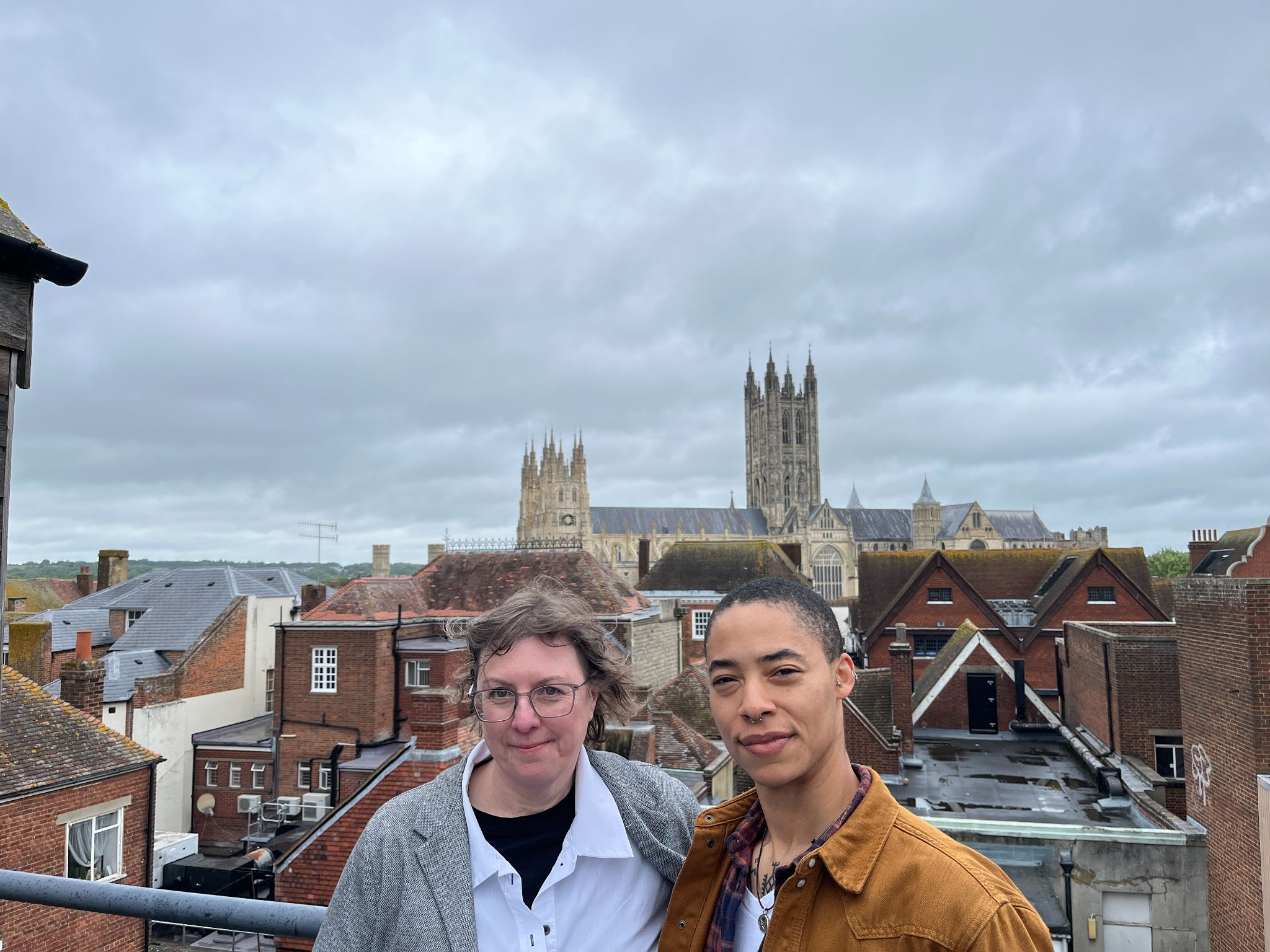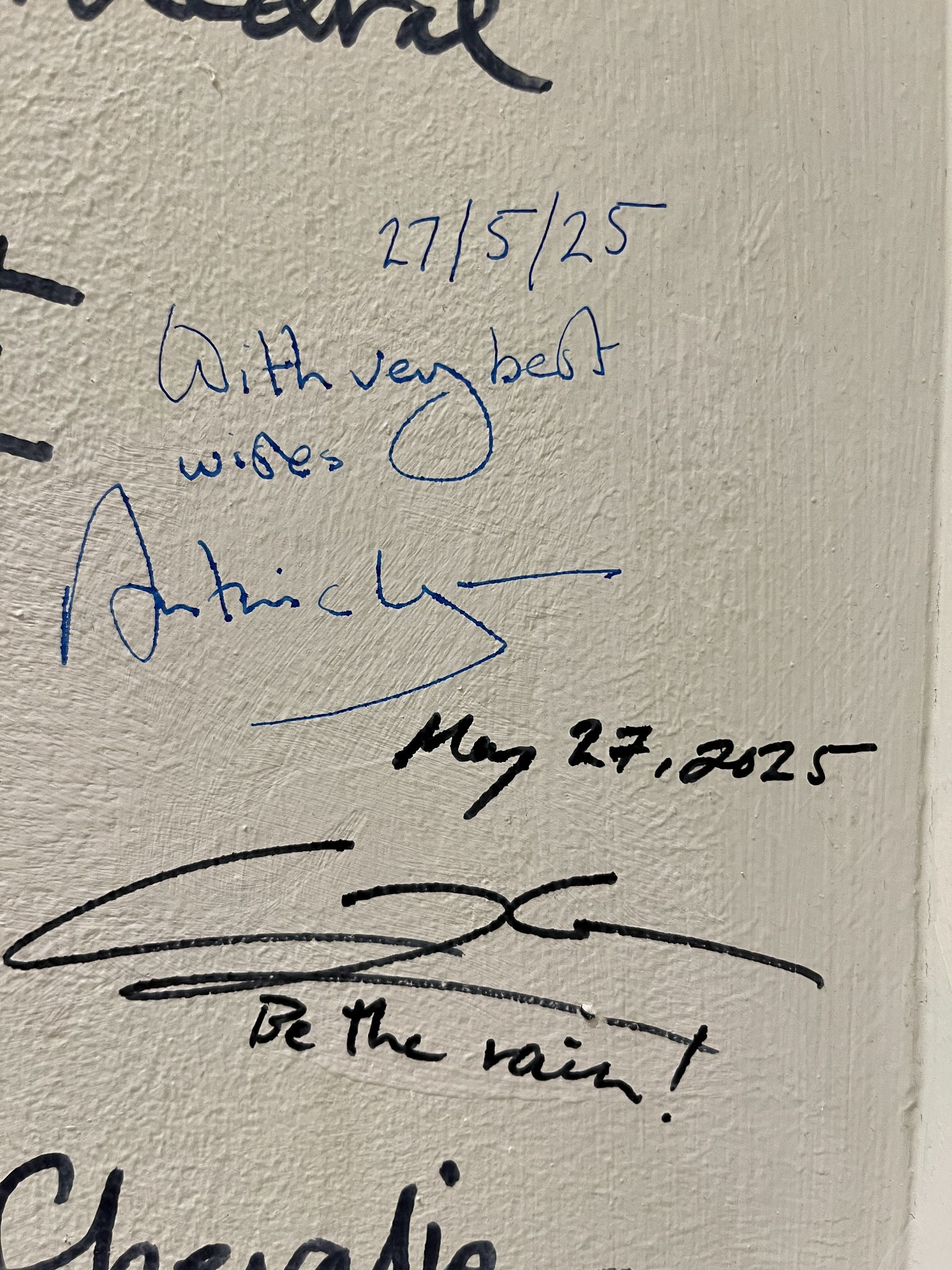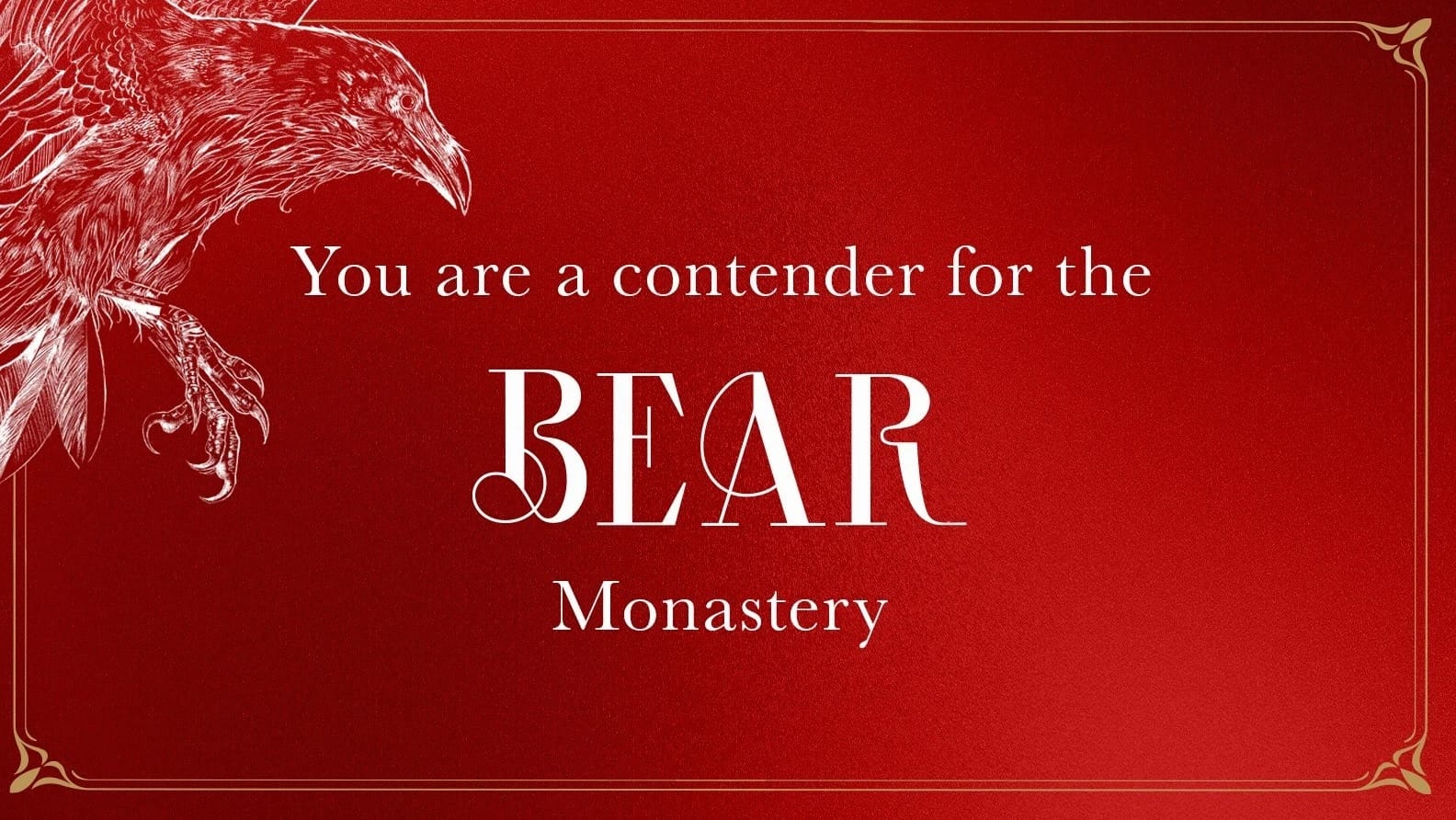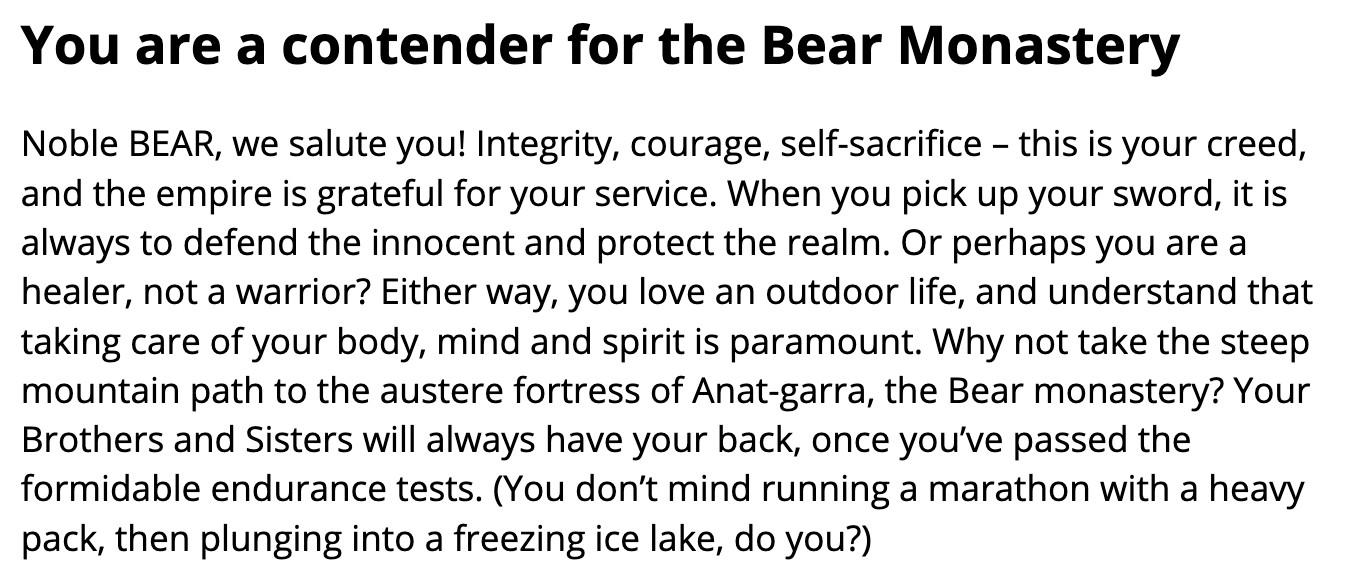A Raven, a Fox, and a Bear all walk into—An Interview with Antonia Hodgson
C. L. Clark and Antonia Hodgson talk about Hodgson’s new epic fantasy The Raven Scholar, book one of the Eternal Path trilogy.

Welcome to another interview that I did with a writer I admire greatly! This one was with Antonia Hodgson of The Raven Scholar in Canterbury on May 27, 2025.
Though I have only done one other interview transcript for you all, they are fast becoming one of my favorite things.
The Raven Scholar is about…a scholar. Of the Raven Monastery. Surprise! (NB: they are not animals.) When the Raven candidate in the great contest between the eight animal monasteries that will decide who will become the next ruler is found dead, Neema Krah not only has to solve the murder—she has to take her place as candidate. Neema is not well-liked and because of that, I found her so very lovable.
My favorite thing about the book is that the twists started at the beginning and didn’t stop. It kept me worried, kept me hoping, kept me genuinely intrigued throughout its whole hefty beauty. It was fun and unpredictable in a way that’s hard to find for a long-time fantasy fan.
Before this interview, I had dinner with Antonia and tried not to lose my shit too much, but I did talk her ear off about writing and some of the craft techniques she used (too spoiler-y for our interview below), as well as the joys and struggles of the writing. We also got to take a trip to the top of the Canterbury Waterstones, which was a great treat from the booksellers and I’m grateful they shared it with us. And then at the end, we got to sign the Wall!


This interview starts just after the intro where I ask Antonia about the animal guardians that guide the society in The Raven Scholar because I forgot to record them. For the purposes of this interview, however, I will drop the list here:
Fox, Raven, Tiger, Ox, Bear, Monkey, Tiger, Hound, Dragon.
Each of them is said to hold certain qualities, and each set of qualities is the foundation for a monastery in this society that elite candidates may enter into—after rigorous tests.
Without further ado, please enjoy my talk with Antonia Hodgson!
CC: I wanted to go to the actual technicality, like the technical product that is this book. It is a big book. I love it. How big exactly? Like how many words can you remember like when you turned in the final draft where we hit?
AH: Yeah, I can. It's 195,000 words to be specific. Which is chunky. But I do think with epic fantasy, which this is, and particularly when you're introducing an entire new world, as a reader, I like to be immersed and so I needed it to be long enough that I'm kind of really getting into the world and studying how it works as well as having the adventure along the way.
CC: So how was the process of writing that for you then?
AH: Yeah, I mean, you know, it is substantial. I have written previous books that are probably about half that length usually. And so just the pure practicalities of editing that book, it just everything just takes a lot longer because there's just a lot more words. And of course, you have to hold it in your mind. But that was part of the pleasure of it as well, because, again, I love immersive worlds, I love to fall into a book and feel I'm completely lost in it. And so I did have at least some of that experience when I was writing it as well. I did feel completely absorbed into that.
CC: I mean, I was absolutely in. This was actually when they were asking me to read this book, because we read books for, you know, the author comments on the back covers and stuff. The email that I got from the team was, “Hey, Cherae, I have a really big book for you. You're gonna love it and it's really big.” Like she said it multiple times. And I think it's just because I've been asking, I've been saying, oh, I just miss really chunky fantasy. I really just miss the days of curling up on a couch with a book that's too big for two hands and they delivered with this book. So I'm really excited that I think I actually even said that in one of my reviews, that the age of epic fantasy is back.

CC: I personally am a huge fan of The Raven Scholar at large, but also Neema in particular. But you did mention smaller novels. So before we talk about my homegirl Neema, can you tell us a bit about the transition? Because you said you'd been writing all other novels, crime novels. There is a crime in the center of the book, but, how was the transition from crime novel to epic fantasy?
AH: Yes, so I wrote four previous books in a historical crime series. But before that, the very first book that I ever wrote, which was never published, was a kind of Gothic fantasy written in diaries and letters form with vampires. And I always joked that I started writing it before Twilight came out and I finished writing it when everyone had finished reading all of the Twilight series. It took me so long. It was sort of like I was as I was like, “oh, no, oh, everyone's getting to vampires.” Then, “Oh, no, everyone's tired of vampires and I haven’t even finished yet.”
So, you know, it didn't work. It was a classic first book that you write and then put in a drawer, but learn a lot from. So that was kind of my yearning, to write these really big—it was really big as well, it was even bigger than The Raven Scholar. But from that, a tiny bit of it was set in the 1720s and I got really interested in that period. And so from there I then wrote Historical Crime set in that period. So in a weird sort of way, when people say, “Oh, you know, why did you end up writing fantasy” but I’ve almost come in a sort of circle back round.
CC: So the crime novels were the kind of accidental jump over and now you've come back.
AH: Yeah, yeah. There are similarities, you know, to go to your point about what it was like to move. Obviously, when you're writing historically, you're creating a world. You're having to imagine yourself in a world that you've never lived in. And you're also having to think about the reader who won't know that world either and how you introduce them to it. So there are a lot of the same technical requirements, you know—
CC: Walking them through it.
AH: Right. What you show, what you don’t show, the language, you know. How it actually functions when you don't have mobile phones or what you know.
CC: Yeah, what society functions like because it's not like ours.
AH: So you're trying to create—you really are creating a world, even when it's fiction. Or even, you know, arguably when you're writing non-fiction history, you're having to at least sort of bring that to life for, as I say, for a reader who's never lived there. So those things are those things I think are really similar. And even the choices about how much detail you put in. And with historical, it’s how much research do you do and then of course, with fantasy, it's how much research do you invent [laughter]. But it's still like—at what point do you feel you've got enough to then start writing?
CC: I mean, to your point, actually, whenever I have the teacher class on fantasy writing or not fantasy writing specifically, but just like writing, and knowing that there are non-fantasy writers, like, just realistic fiction writers in my class, we all do the world-building, even if they're writing contemporary realism. Because I've, where were we saying? I've never been to Whitstable. So if someone wants to write something in Whitstable, they need to build that world for me. So, yeah, I think world building is for everybody.
So we've done the categories, like we’ve run down the categories of Guardian animals and their monasteries. Can you tell, just a little bit about the inspiration for them, and then maybe, please, please tell them how you get into these schools? At least a couple schools. You know what school I'm talking about.
AH: What, the fox?[1]
CC: Yes.
AH: Yeah, so the very sort of early thinking I had was, I'm just really interested in that thing about animal symbolism and how it relates to the actual behaviours of the animals. So it's that feeling that obviously our ancestors were living much closer to nature than we are today. And so we'd just be observing these creatures really closely and from that building mythologies. So, you know, they'll see how a raven behaves. And I spent a little bit of time around ravens, and you very quickly do get a sense of personality and behaviours. And so I was really interested in that and that's why the animals that I ran through, they pretty much all do have symbolism that we would almost immediately be able to pick up on. We all kind of roughly have a sense of what tiger symbolism might be. So that was where it came from. And then and then it all kind of filtered from there.
So within the world, there was, you can just be a tiger or an ox living in the world, but then some people do specifically get into these monasteries that are quite elite in a way. And they all have their different processes for how you get into them. So the ravens, obviously because, you know, they love their exams and their facts, obviously it's a much more straightforward, like we would recognise as a sort of—almost like an Oxbridge exam process because of course it would be.
But the foxes, who, as I said, don't really like to do anything in the kind of usual way. You can get in as long as you can actually get in without being noticed.
CC: So you get into the physical building or the physical monastery grounds. And as long as you get there—
AH: Yeah, then you're in. But you have to get in without being spotted. So—they’re called anats, the monasteries—so Anat-russir, which is the Fox monastery, if you just appear—I’m writing at the moment, in book two, there's a character and it's got a little bit of background to how they got in. And I still don't really want to say how they got in.
AH: But yeah, so they just have to kind of materialize. There's sort of a joke that one of them got through a trebuchet, but whether that's true or not—
CC: It seems hard to not notice. I did, when I read that, I was like, “I guess if I was really paying attention, or maybe if they timed it really well,” but yeah, I love that. I love that!
AH: If you have a trebuchet, you'd have to know where you're landing on the other side otherwise it could be the end of you before we start.
CC: But you would be a fox initiate for a minute before you expired.
So we've got this book. And as we mentioned, as fairly obvious, it is about a raven scholar. So we are reading about someone who was at the Raven Monastery. And it stands to reason that if we're spending a lot of time in her point of view, we might have something like footnotes. Can you tell us a bit more about that process, like why you included them structurally, what they're doing for you? Did you have as much fun writing them as I had reading them?
AH: Yeah, I love footnotes. Who loves footnotes? [audience nodding] Yeah, look at this. A really good majority there. Sorry for the people who don't. You can always not read them.
CC: You can not read them, but—
AH: Yeah, you'll miss things. So there's a couple of reasons why. Yes, I really like them because it fitted with the whole nature of the book, you know, from this perspective of the scholars. Neema is a great footnote lover herself, the main character, because, you know, she's always got more facts that she would like to somehow stuff in somewhere.
CC: Even, I just have to interrupt you. Even like, as we're going through the main narrative, it's full of parentheticals, like, where she's like, “(And also this happened in blahdy, blahdy, blahdy blahdy, blah.)” and “(Also, I was thinking this.)” And it was just such a pleasure to read.
AH: Thank you. Yeah, it's partly this nature of someone who's always got more to tell you, and that's why she's so incredibly deeply unpopular. And so there's probably that. And also, I noticed that there's this thing about ravens and caching. So in the wild a raven, if it's got enough food, it will then cache the rest of its food. And I really like that idea as sort of, again, as just a funny little echo in the footnote. It's like it's almost like…
CC: It's like a little cache!
AH: Yeah, it's like a little, you know, just put this little nugget down here and you can eat it later if you like or you can, you know, but it's there.
CC: That's actually even more clever than I was thinking you were, and it was already—Okay, no, yeah, that's great. Because it really—for those of you who have read it, how many of you read it already? Okay, cool. So is it not like a little bonus cache of little tidbits of extra history and information? That's brilliant.
AH: It's very inspiring. I've become quite friendly with the Raven called Bran whose human Lloyd Buck is pretty well known. He's worked with Chris Packham and David Attenborough and so he has quite a lot of birds that he looks after, including Bran, who's—if you've ever seen a raven on TV, it could well be him. So I spent a little time and even just like a morning watching that bird, you just just draw so much out of their behaviour. And so, the caching.
CC: So you know a celebrity raven as well as all of this.
AH: Yeah, he's just done his first photo shoot with an upcoming rapper whose name I've forgotten, but yeah. And apparently he'd never done this kind of posing before, but the rapper was doing poses and then Bran got really into it as well, putting his wings up. So he's for hire.
CC: So he’s for hire. And you've got a book out…
AH: I'll show you, I've got pictures—
CC: No, you should bring him on tour.
AH: Oh, yeah. Yeah. Well, the funny thing about Bran is that he’ll be fine and really attentive and then very quickly decide that he's done. And you absolutely know. So I go to see him and then he'll be, you know, hanging out with you, and then he'll suddenly just turn around and walk back to the—And people don't believe this, but he actually can open—he can pull the bolt with his beak and then close it behind him. “I'm done.”
CC: I—so I used to think that maybe—like when I was reading this—I was like, “Ah, yes, obviously I will be a fox or a tiger.” And I am a writer. So obviously I have raven tendencies. And now I'm thinking more and more that I'm just actually a raven, because I definitely go into my enclosure.
AH: Yes.
CC: Like mid-conversation sometimes and just close the door. Won't see me again until I'm ready to come back out.
Okay. So speaking of perspectives and speaking of ravens, can you tell us a bit more about the overall perspective of the book, especially like the narrative textual perspective?
AH: Yes, so um we talked about this….
CC: We debated if this was a spoiler or not, we don't think it is.
AH: Yeah, we've decided it’s not. Or you can try and forget it afterwards. So, yeah, it appears at first that the narrator is just omniscient and then it becomes apparent very quickly, that actually, you're being told this story from the perspective of the Raven Guardian. And so it's kind of a choral voice. And one thing I liked about it is, you know, obviously you have a flock, so you have that sense of literally a bird's eye view.
I'd written first person for my previous series, which is great. It has its own kind of rigor, to use the word we were using earlier. I wanted to expand it out, but I did want certain limitations as well, and I think what's great about it, you have a narrator who thinks it's omniscient, but actually does have to work within certain parameters. And it's just quite fun then, because if you have a narrator who thinks it knows everything and thinks it's kind of amazing, but is actually slightly limited by certain rules, which it really doesn't like and wants to play with. It just kind of creates a sort of certain energy, I think, to the voice and to the perspective that it allows.
CC: Yeah, you get the best of a lot of worlds. You get the power of an individual that you might get from first person, even if the individual is plural. And you also get the power of omniscience in being able to see everything. But also you get the power of an unreliable narrator, which was very exciting to me when I saw all of these things start clicking. So I hope you guys have so much fun when you meet my faves—my other faves—I have a lot of faves, actually, in this book. And you guys will find—I will actually—find me online and tell me who your favorite is.[2] And if you can pick one character, I would be astounded.
We are just about at time for questions, so I'm going to ask one more question, and this will give you guys time to come up with yours, okay? Was there anything outside of the animals, like any other things from your own world that you brought into this, that you were like, especially obsessed with, enthusiastic about?
AH: Well, obviously the raven. But I do practice Thai chi, so I think there are certain echoes within. All my Tai Chi friends have gone, “Oh,” and they pick up slightly different things that—I might not even be aware that I put them in, but they're hearing them. Certainly from the martial aspect because there are quite a lot of fight scenes within the trials. Some of the trials are very cerebral, but there are also these fights on the fight platform. I'm not a fighter. At all. And in fact, there are four pillars of Tai Chi. One of them is martial application, and I'm genuinely bad at martial application, but it does mean I know all of the kind of—some of the techniques and the kind of phrasing and things like that. And I do also practice Chinese calligraphy. So the brushwork and things like that in the book came from there. But again, I put it in the acknowledgements, in that classic way, all errors mine. I'm a practitioner. Neema is described as having the best hand on the island and I do not have the best hand on the island.
CC: But you can tell that you're experienced with it as you're describing.
AH: Yes, I knew what it looked like and all.
CC: Yeah. Okay. Very good. Okay, there is actually one more question. We can make it short. What is your animal? What monastery would you go into?
AH: My publishers created a survey that you can do. They came up with the questions and then I did the answers. So when I did it, I suppose that I already knew the answers, so it's a bit flawed. I came out as mainly Raven with a bit of monkey. But the more I think about it, I think I'm foxy. I think I have foxy undertones. I think it’s the fact that I'm refusing to really answer this question![3]

Oops, I was wrong. Guess I’m a bear. 🐻😏
So, I will end this transcript of the interview here as we devolved into the Q&A section and those are always a bit messy and informal and people start brandishing things and it’s too hard to keep track of for a humble audio recording.
If you haven’t already read it, please let my nerdy excitement convince you—this book is clever, it’s gripping, and it’s epic. Then come back here and talk to me about it. It was a blast to read and I am eagerly awaiting The Fox in Winter. It’s a big book, I suspect, so I’ll be patient.

Congratulations, I played myself.
